Early versus delayed oral feeding after major gynaecologic surgery
- PMID: 39132743
- PMCID: PMC11318081
- DOI: 10.1002/14651858.CD004508.pub5
Early versus delayed oral feeding after major gynaecologic surgery
Abstract
Background: This is an updated and expanded version of the original Cochrane review, first published in 2014. Postoperative oral intake is traditionally withheld after major abdominal gynaecologic surgery until the return of bowel function. The concern is that early oral intake will result in vomiting and severe paralytic ileus, with subsequent aspiration pneumonia, wound dehiscence, and anastomotic leakage. However, clinical studies suggest that there may be benefits from early postoperative oral intake. Currently, gynaecologic surgery can be performed through various routes: open abdominal, vaginal, laparoscopic, robotic, or a combination. In this version, we included women undergoing major gynaecologic surgery through all of these routes, either alone or in combination.
Objectives: To assess the effects of early versus delayed (traditional) initiation of oral intake of food and fluids after major gynaecologic surgery.
Search methods: On 13 June 2023, we searched the Cochrane Gynaecology and Fertility Group's Specialised Register, CENTRAL, MEDLINE, Embase, the citation lists of relevant publications, and two trial registries. We also contacted experts in the field for any additional studies.
Selection criteria: We included randomised controlled trials (RCTs) that compared the effect of early versus delayed initiation of oral intake of food and fluids after major gynaecologic surgery, performed by abdominal, vaginal, laparoscopic, and robotic approaches. Early feeding was defined as oral intake of fluids or food within 24 hours post-surgery, regardless of the return of bowel function. Delayed feeding was defined as oral intake after 24 hours post-surgery, and only after signs of postoperative ileus resolution. Primary outcomes were: postoperative ileus, nausea, vomiting, cramping, abdominal pain, bloating, abdominal distension, need for postoperative nasogastric tube, time to the presence of bowel sounds, time to the first passage of flatus, time to the first passage of stool, time to the start of a regular diet, and length of postoperative hospital stay. Secondary outcomes were: infectious complications, wound complications, deep venous thrombosis, urinary tract infection, pneumonia, satisfaction, and quality of life.
Data collection and analysis: Two review authors independently selected studies, assessed the risk of bias, and extracted the data. We calculated the risk ratio (RR) with a 95% confidence interval (CI) for dichotomous data. We examined continuous data using the mean difference (MD) and a 95% CI. We tested for heterogeneity between the results of different studies using a forest plot of the meta-analysis, the statistical tests of homogeneity of 2 x 2 tables, and the I² value. We assessed the certainty of the evidence using GRADE methods.
Main results: We included seven randomised controlled trials (RCTs), randomising 902 women. We are uncertain whether early feeding compared to delayed feeding has an effect on postoperative ileus (RR 0.49, 95% CI 0.21 to 1.16; I² = 0%; 4 studies, 418 women; low-certainty evidence). We are uncertain whether early feeding affects nausea or vomiting, or both (RR 0.94, 95% CI 0.66 to 1.33; I² = 67%; random-effects model; 6 studies, 742 women; very low-certainty evidence); nausea (RR 1.24, 95% CI 0.51 to 3.03; I² = 74%; 3 studies, 453 women; low-certainty evidence); vomiting (RR 0.83, 95% CI 0.52 to 1.32; I² = 0%; 4 studies, 559 women; low-certainty evidence), abdominal distension (RR 0.99, 95% CI 0.75 to 1.31; I² = 0%; 4 studies, 559 women; low-certainty evidence); need for postoperative nasogastric tube placement (RR 0.46, 95% CI 0.14 to 1.55; 3 studies, 453 women; low-certainty evidence); or time to the presence of bowel sounds (MD -0.20 days, 95% CI -0.46 to 0.06; I² = 71%; random-effects model; 3 studies, 477 women; low-certainty evidence). There is probably no difference between the two feeding protocols for the onset of flatus (MD -0.11 days, 95% CI -0.23 to 0.02; I² = 9%; 5 studies, 702 women; moderate-certainty evidence). Early feeding probably results in a slight reduction in the time to the first passage of stool (MD -0.18 days, 95% CI -0.33 to -0.04; I² = 0%; 4 studies, 507 women; moderate-certainty evidence), and may lead to a slightly sooner resumption of a solid diet (MD -1.10 days, 95% CI -1.79 to -0.41; I² = 97%; random-effects model; 3 studies, 420 women; low-certainty evidence). Hospital stay may be slightly shorter in the early feeding group (MD -0.66 days, 95% CI -1.17 to -0.15; I² = 77%; random-effects model; 5 studies, 603 women; low-certainty evidence). The effect of the two feeding protocols on febrile morbidity is uncertain (RR 0.96, 95% CI 0.75 to 1.22; I² = 47%; 3 studies, 453 women; low-certainty evidence). However, infectious complications are probably less common in women with early feeding (RR 0.20, 95% CI 0.05 to 0.73; I² = 0%; 2 studies, 183 women; moderate-certainty evidence). There may be no difference between the two feeding protocols for wound complications (RR 0.82, 95% CI 0.50 to 1.35; I² = 0%; 4 studies, 474 women; low-certainty evidence), or pneumonia (RR 0.35, 95% CI 0.07 to 1.73; I² = 0%; 3 studies, 434 women; low-certainty evidence). Two studies measured participant satisfaction and quality of life. One study found satisfaction was probably higher in the early feeding group, while the other study found no difference. Neither study found a significant difference between the groups for quality of life (P > 0.05).
Authors' conclusions: Despite some uncertainty, there is no evidence to indicate harmful effects of early feeding following major gynaecologic surgery, measured as postoperative ileus, nausea, vomiting, or abdominal distension. The potential benefits of early feeding include a slightly faster initiation of bowel movements, a slightly sooner resumption of a solid diet, a slightly shorter hospital stay, a lower rate of infectious complications, and a higher level of satisfaction.
Copyright © 2024 The Cochrane Collaboration. Published by John Wiley & Sons, Ltd.
Conflict of interest statement
Kittipat Charoenkwan: none
Chalaithorn Nantasupha: none
Tanarat Muangmool: none
Elizabeth Matovinovic: none
Figures


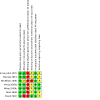






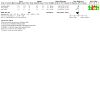


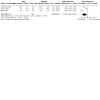
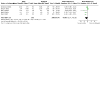




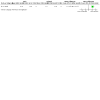
Update of
-
Early versus delayed oral fluids and food for reducing complications after major abdominal gynaecologic surgery.Cochrane Database Syst Rev. 2014 Dec 12;2014(12):CD004508. doi: 10.1002/14651858.CD004508.pub4. Cochrane Database Syst Rev. 2014. Update in: Cochrane Database Syst Rev. 2024 Aug 12;8:CD004508. doi: 10.1002/14651858.CD004508.pub5. PMID: 25502897 Free PMC article. Updated.
References
References to studies included in this review
Amatyakul 2001 {unpublished data only}
-
- Amatyakul P, Suprasert P. Length of hospital stay after major gynecologic operation: a comparison between traditional and early oral feeding. Dissertation thesis for the diploma in Obstetrics and Gynecology, The Royal Thai College of Obstetricians and Gynecologists 2001.
Balayla 2015 {published data only}
-
- Balayla J, Bujold E, Lapensée L, Mayrand MH, Sansregret A. Early versus delayed postoperative feeding after major gynaecological surgery and its effects on clinical outcomes, patient satisfaction, and length of stay: a randomized controlled trial. Journal of Obstetrics and Gynaecology Canada 2015;37(12):1079-85. - PubMed
MacMillan 2000 {published data only}
-
- MacMillan SL, Kammerer-Doak D, Rogers RG, Parker KM. Early feeding and the incidence of gastrointestinal symptoms after major gynecologic surgery. Obstetrics and Gynecology 2000;96(4):604-8. - PubMed
Minig 2009a {published data only}
-
- Minig L, Biffi R, Zanagnolo V, Attanasio A, Beltrami C, Bocciolone L, et al. Early oral versus "traditional" postoperative feeding in gynecologic oncology patients undergoing intestinal resection: a randomized controlled trial. Annals of Surgical Oncology 2009;16(6):1660-8. - PubMed
Minig 2009b {published data only}
-
- Minig L, Biffi R, Zanagnolo V, Attanasio A, Beltrami C, Bocciolone L, et al. Reduction of postoperative complication rate with the use of early oral feeding in gynecologic oncologic patients undergoing a major surgery: a randomized controlled trial. Annals of Surgical Oncology 2009;16(11):3101-10. - PubMed
Pearl 1998 {published data only}
-
- Pearl ML, Valea FA, Fischer M, Mahler L, Chalas E. A randomized controlled trial of early postoperative feeding in gynecologic oncology patients undergoing intra-abdominal surgery. Obstetrics and Gynecology 1998;92(1):94-7. - PubMed
Steed 2002 {published data only}
-
- Steed HL, Capstick V, Flood C, Schepansky A, Schulz J, Mayes DC. A randomized controlled trial of early versus "traditional" postoperative oral intake after major abdominal gynecologic surgery. American Journal of Obstetrics and Gynecology 2002;186(5):861-5. - PubMed
References to studies excluded from this review
Baker 2015 {published data only}
-
- Baker J, Janda M, Graves N, Bauer J, Banks M, Garrett A, et al. Quality of life after early enteral feeding versus standard care for proven or suspected advanced epithelial ovarian cancer: results from a randomised trial. Gynecologic Oncology 2015;137(3):516-22. - PubMed
Cutillo 1999 {published data only}
-
- Cutillo G, Maneschi F, Franchi M, Giannice R, Scambia G, Benedetti-Panici P. Early feeding compared with nasogastric decompression after major oncologic gynecologic surgery: a randomized study. Obstetrics and Gynecology 1999;93(1):41-5. - PubMed
Delaney 2005 {published data only}
-
- Delaney C, Weese J, Hyman N, Bauer J, Techner L, Gabriel K, et al. Phase III trial of alvimopan, a novel, peripherally acting, Mu opioid antagonist, for postoperative ileus after major abdominal surgery. Diseases of the Colon and Rectum 2005;48(6):1114-29. - PubMed
Fanning 1999 {published data only}
-
- Fanning J, Yu-Brekke S. Prospective trial of aggressive postoperative bowel stimulation following radical hysterectomy. Gynecologic Oncology 1999;73(3):412-4. - PubMed
Fanning 2011 {published data only}
-
- Fanning J, Hojat R. Safety and efficacy of immediate postoperative feeding and bowel stimulation to prevent ileus after major gynecologic surgical procedures. Journal of the American Osteopathic Association 2011;111(8):469-72. - PubMed
Feng 2008 {published data only}
-
- Feng S, Chen L, Wang G, Chen A, Qiu Y. Early oral intake after intra-abdominal gynecological oncology surgery. Cancer Nursing 2008;31(3):209-13. - PubMed
Finan 1995 {published data only}
-
- Finan M, Barton D, Fiorica J, Hoffman M, Roberts W, Gleeson N, et al. Ileus following gynecologic surgery: management with water-soluble hyperosmolar radiocontrast material. Southern Medical Journal 1995;88(5):539-42. - PubMed
Griffenberg 1997 {published data only}
-
- Griffenberg L, Morris M, Atkinson N, Levenback C. The effect of dietary fiber on bowel function following radical hysterectomy: a randomized trial. Gynecologic Oncology 1997;66(3):417-24. - PubMed
Kraus 2000 {published data only}
-
- Kraus K, Fanning J. Prospective trial of early feeding and bowel stimulation after radical hysterectomy. American Journal of Obstetrics and Gynecology 2000;182(5):996-8. - PubMed
Pearl 2002 {published data only}
-
- Pearl ML, Frandina M, Mahler L, Valea FA, DiSilvestro PA, Chalas E. A randomized controlled trial of a regular diet as the first meal in gynecologic oncology patients undergoing intraabdominal surgery. Obstetrics and Gynecology 2002;100(2):230-4. - PubMed
Schilder 1997 {published data only}
-
- Schilder JM, Hurteau JA, Look KY, Moore DH, Raff G, Stehman FB, et al. A prospective controlled trial of early postoperative oral intake following major abdominal gynecologic surgery. Gynecologic Oncology 1997;67(3):235-40. - PubMed
Taguchi 2001 {published data only}
-
- Taguchi A, Sharma N, Saleem R, Sessler D, Carpenter R, Seyedsadr M, et al. Selective postoperative inhibition of gastrointestinal opioid receptors. New England Journal of Medicine 2001;345(13):935-40. - PubMed
Terzioglu 2013 {published data only}
-
- Terzioglu F, Şimsek S, Karaca K, Sariince N, Altunsoy P, Salman MC. Multimodal interventions (chewing gum, early oral hydration and early mobilisation) on the intestinal motility following abdominal gynaecologic surgery. Journal of Clinical Nursing 2013;22(13-14):1917-25. - PubMed
Additional references
Aarts 2015
Antosh 2013
-
- Antosh DD, Grimes CL, Smith AL, Friedman S, McFadden BL, Crisp CC, et al. A case-control study of risk factors for ileus and bowel obstruction following benign gynecologic surgery. International Journal of Gynecology & Obstetrics 2013;122:108-11. - PubMed
Artinyan 2008
-
- Artinyan A, Nunoo-Mensah JW, Balasubramaniam S, Gauderman J, Essani R, Gonzalez-Ruiz C, et al. Prolonged postoperative ileus-definition, risk factors, and predictors after surgery. World Journal of Surgery 2008;32(7):1495-500. - PubMed
Billson 2013
Bufo 1994
-
- Bufo AJ, Feldman S, Daniels GA, Lieberman RC. Early postoperative feeding. Disases of the Colon and Rectum 1994;37:1260-5. - PubMed
Chang 2002
-
- Chang SS, Cookson MS, Baumgartner RG, Wells N, Smith JA Jr. Analysis of early complications after radical cystectomy: results of a collaborative care pathway. Journal of Urology 2002;167(5):2012-6. - PubMed
Cullen 1994
-
- Cullen JJ, Eagon JC, Kelly KA. Gastrointestinal peptide hormones during postoperative ileus. Effect of octreotide. Digestive Diseases and Sciences 1994;39(6):1179-84. - PubMed
Deitch 1991
-
- Deitch EA, Andrassy RJ, Booth FVM, Moore FA. Current concepts in postoperative feeding. Contemporary Surgery 1991;39:37-55.
Fanning 2001
-
- Fanning J, Andrews S. Early postoperative feeding after major gynecologic surgery: evidence-based scientific medicine. American Journal of Obstetrics and Gynecology 2001;185(1):1-4. - PubMed
Foxx‐Orenstein 2016
-
- Foxx-Orenstein AE. Ileus and pseudo-obstruction. In: Feldman M, Friedman LS, Brandt LJ, editors(s). Sleisenger and Fordtran's Gastrointestinal and Liver Disease. 10th edition. Philadelphia: Saunders, 2016:2172-95.
Garry 2004
GRADEpro GDT [Computer program]
-
- GRADEpro GDT. Version accessed 2022. Hamilton (ON): McMaster University (developed by Evidence Prime), 2022. Available from www. gradepro.org.
Guo 2015
-
- Guo J, Long S, Li H, Luo J, Han D, He T. Early versus delayed oral feeding for patients after cesarean. International Journal of Gynaecology and Obstetrics 2015;128(2):100-5. - PubMed
Higgins 2003
Higgins 2011
Hollenbeck 2005
-
- Hollenbeck BK, Miller DC, Taub D, Dunn RL, Khuri SF, Henderson WG, et al. Identifying risk factors for potentially avoidable complications following radical cystectomy. Journal of Urology 2005;174:1231-7. - PubMed
Huang 2016
-
- Huang H, Wang H, He M. Early oral feeding compared with delayed oral feeding after cesarean section: a meta-analysis. Journal of Maternal-Fetal & Neonatal Medicine 2016;29(3):423-9. - PubMed
Kalff 1998
Lefebvre 2022
-
- Lefebvre C, Glanville J, Briscoe S, Featherstone R, Littlewood A, Marshall C, et al. Chapter 4: Searching for and selecting studies. In: Higgins JPT, Thomas J, Chandler J, Cumpston M, Li T, Page MJ, et al, editor(s). Cochrane Handbook for Systematic Reviews of Interventions Version 6.3 (updated February 2022). Cochrane, 2022. Available from https://training.cochrane.org/handbook/archive/v6.3/chapter-04.
Lewis 2001
Luckey 2003
-
- Luckey A, Livingston E, Taché Y. Mechanisms and treatment of postoperative ileus. Archives of Surgery 2003;138(2):206-14. - PubMed
Mangesi 2002
Martínez 1997
-
- Martínez V, Rivier J, Wang L, Taché Y. Central injection of a new corticotropin-releasing factor (CRF) antagonist, astressin, blocks CRF- and stress-related alterations of gastric and colonic motor function. Journal of Pharmacology and Experimental Therapeutics 1997;280(2):754-60. - PubMed
Nachlas 1972
Nelson 2019
-
- Nelson G, Bakkum-Gamez J, Kalogera E, Glaser G, Altman A, Meyer LA, et al. Guidelines for perioperative care in gynecologic/oncology: Enhanced Recovery After Surgery (ERAS) Society recommendations—2019 update. International Journal of Gynecological Cancer 2019;29(4):651-68. - PubMed
Ramirez 2018
-
- Ramirez PT, Frumovitz M, Pareja R, Lopez A, Vieira M, Ribeiro R, et al. Minimally invasive versus abdominal radical hysterectomy for cervical cancer. New England Journal of Medicine 2018;379(20):1895-904. - PubMed
Reissman 1995
RevMan Web 2022 [Computer program]
-
- Review Manager Web (RevMan Web). Version 6.3.1. The Cochrane Collaboration, 2022. Available at revman.cochrane.org.
Schünemann 2022
-
- Schünemann HJ, Higgins JPT, Vist GE, Glasziou P, Akl EA, Skoetz N, et al. Chapter 14: Completing ‘Summary of findings’ tables and grading the certainty of the evidence. In: Higgins JPT, Thomas J, Chandler J, Cumpston M, Li T, Page MJ, et al, editor(s). Cochrane Handbook for Systematic Reviews of Interventions Version 6.3 (updated February 2022). Cochrane, 2022. Available from training.cochrane.org/handbook/archive/v6.3.
Singh 1998
-
- Singh G, Ram RP, Khanna SK. Early postoperative enteral feeding in patients with nontraumatic intestinal perforation and peritonitis. Journal of the American College of Surgeons 1998;187(2):142-6. - PubMed
Türler 2002
Vather 2013
-
- Vather R, Trivedi S, Bissett I. Defining postoperative ileus: results of a systematic review and global survey. Journal of Gastrointestinal Surgery 2013;17:962-72. - PubMed
Windsor 1988
-
- Windsor JA, Knight GS, Hill GL. Wound healing response in surgical patients: recent food intake is more important than nutritional status. British Journal of Surgery 1988;75(2):135-7. - PubMed
Zittel 1998
-
- Zittel TT, Lloyd KC, Rothenhöfer I, Wong H, Walsh JH, Raybould HE. Calcitonin gene-related peptide and spinal afferents partly mediate postoperative colonic ileus in the rat. Surgery 1998;123(5):518-27. - PubMed
References to other published versions of this review
Charoenkwan 2003
Charoenkwan 2007
Publication types
MeSH terms
LinkOut - more resources
Full Text Sources

